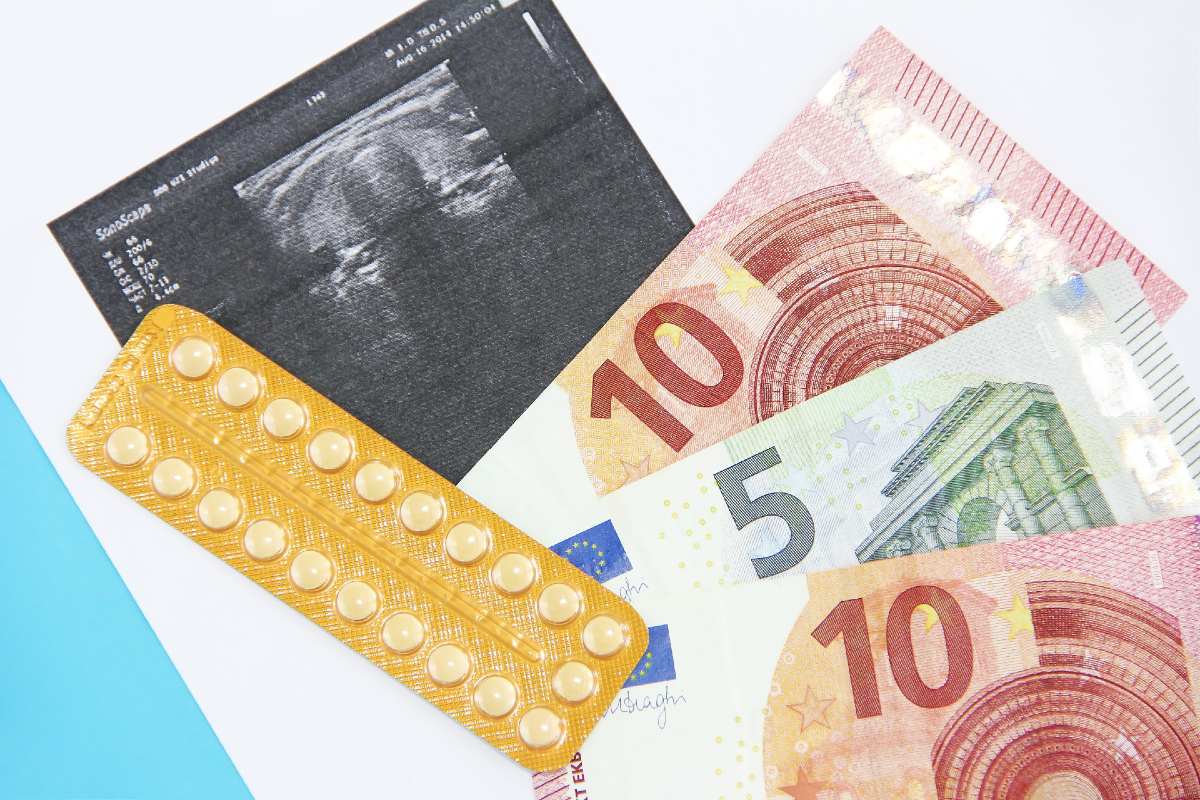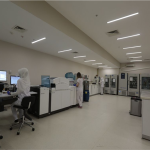Is IVF Expensive? A Deep Dive into Costs, Affordability, and What You Need to Know
In vitro fertilization, or IVF, is a life-changing option for many who dream of starting a family but face fertility challenges. It’s a medical marvel that’s helped millions of babies come into the world since the first “test-tube baby,” Louise Brown, was born in 1978. But while the science is inspiring, one question looms large for anyone considering this path: Is IVF expensive? The short answer is yes—it can be. A single cycle often costs between $15,000 and $30,000 in the U.S., and that’s just the starting point. For many, the price tag feels like a mountain too steep to climb.
But there’s more to the story than just a big number. Costs vary wildly depending on where you live, what your insurance covers (if anything), and the unique details of your treatment. Plus, the emotional and physical investment can make the financial side feel even heavier. So, let’s break it all down—step by step, dollar by dollar—to see what IVF really costs, why it’s priced that way, and how people are finding ways to make it work. Along the way, we’ll uncover some lesser-known factors, fresh insights from recent trends, and practical tips to help you navigate this journey.
The Basics: What Makes Up the Cost of IVF?
IVF isn’t just one simple procedure—it’s a series of steps, each with its own price tag. Understanding what you’re paying for can take some of the mystery (and sticker shock) out of the process. Here’s a rundown of the main pieces:
- Ovarian Stimulation: This is where you take medications to help your ovaries produce multiple eggs. These drugs—like follicle-stimulating hormones—can cost $3,000 to $5,000 per cycle, depending on the dosage and brand. Some folks need more, some less, based on how their body responds.
- Monitoring: Doctors keep a close eye on your progress with blood tests and ultrasounds. Expect to spend $500 to $1,000 here.
- Egg Retrieval: A minor surgery to collect the eggs from your ovaries. This usually runs $3,000 to $5,000, including anesthesia and facility fees.
- Fertilization and Embryo Culture: In the lab, eggs meet sperm (either naturally or via a technique called ICSI, which we’ll get into later). This step, plus growing the embryos for a few days, adds another $2,000 to $4,000.
- Embryo Transfer: Placing the embryo into the uterus is simpler but still costs around $1,500 to $3,000.
- Extras: Things like genetic testing, freezing embryos, or donor eggs can pile on thousands more—we’ll dive into those later.
Add it all up, and the average “base fee” for one IVF cycle in the U.S. lands between $12,000 and $15,000, according to the American Society for Reproductive Medicine (ASRM). But that’s before extras, taxes, or travel if your clinic’s far away. And here’s the kicker: most people need more than one try. Only about 30% of cycles lead to a live birth for women under 35, and that success rate drops with age. Two or three cycles? Suddenly, you’re looking at $30,000 to $50,000.

Why Does IVF Cost So Much?
If those numbers make your head spin, you’re not alone. So why is IVF so pricey? It’s not just about greed—there are real reasons behind the expense.
High-Tech Science
IVF happens in cutting-edge labs with fancy equipment like incubators and microscopes that cost a fortune to buy and maintain. Plus, the embryologists and doctors running the show are highly trained specialists. Their expertise doesn’t come cheap.
Medications
Those fertility drugs? They’re not your average over-the-counter pills. They’re custom-made hormones, often injected daily for weeks, and pharmaceutical companies charge a premium. A 2023 study from the journal Fertility and Sterility found that medication costs alone can make up 30-50% of the total IVF bill.
No Guarantees
Unlike fixing a broken arm, IVF doesn’t promise results. Clinics invest time, staff, and resources into each cycle, but success isn’t certain. That risk gets baked into the price—sort of like how a bakery charges more for a wedding cake that might not turn out perfect.
Location Matters
Where you live plays a huge role. In New York City or San Francisco, a cycle might hit $20,000 or more due to higher overhead. Head to a smaller town or a country like the Czech Republic (a hotspot for “fertility tourism”), and you might pay closer to $5,000. Posts on X in 2025 highlight this gap, with some users raving about affordable options abroad while others lament U.S. prices.
Does Insurance Help? The Coverage Conundrum
Here’s where things get tricky. In the U.S., IVF isn’t usually covered by standard health insurance. Only 19 states have laws mandating some form of fertility treatment coverage as of 2025, and even then, the rules vary. For example:
- New York: Insurers must cover up to three IVF cycles for large group plans.
- California: A new 2024 law requires coverage for IVF, but it’s still rolling out, and not everyone qualifies.
- Texas: No mandate at all—your wallet’s on its own.
If you’re lucky enough to have coverage, it might cap at $10,000 or exclude pricey add-ons like genetic testing. A 2024 Stanford study found that when insurance kicks in, IVF use jumps—especially for lower-income families. But without it? You’re footing the bill solo, and that’s a dealbreaker for many.
Globally, it’s a mixed bag. The UK’s National Health Service (NHS) offers up to three cycles for women under 40 in some areas, but waitlists are long. In Sweden, public funding slashes costs to a few hundred bucks per cycle. Meanwhile, in low-income countries, IVF is often a luxury only the wealthy can touch.
Hidden Costs You Might Not Expect
Beyond the basics, there are sneaky expenses that can catch you off guard. These don’t always make the headlines in top Google articles, but they’re real hurdles for patients.
Travel and Time Off
If the nearest clinic is hours away, gas, flights, or hotel stays add up fast. Plus, you’ll need days off work for appointments and recovery—unpaid leave can sting if your job doesn’t offer flexibility.
Emotional Support
Therapy or counseling isn’t cheap, but IVF’s emotional rollercoaster often calls for it. A 2024 Swedish study showed one in eight women face infertility-related stress severe enough to need professional help. Budget $100-$200 per session if insurance doesn’t cover it.
Failed Cycles and Storage Fees
A failed cycle isn’t just a setback—it’s another $15,000+ down the drain. And if you freeze embryos for later? Storage fees run $500 to $1,000 a year. Over five years, that’s an extra $2,500+.
Quiz Time: How Much Do You Know About IVF Costs?
Let’s make this fun! Take a quick quiz to test your IVF cost smarts:
- What’s the average cost of one IVF cycle in the U.S.?
- A) $5,000
- B) $15,000
- C) $50,000
- True or False: Most U.S. insurance plans fully cover IVF.
- A) True
- B) False
- Which country offers some of the cheapest IVF options?
- A) Canada
- B) Czech Republic
- C) Australia
(Answers: 1-B, 2-B, 3-B. How’d you do? Share your score in the comments!)

Can You Lower the Cost? Real Strategies That Work
IVF’s price might feel overwhelming, but there are ways to ease the burden. Here’s what people are doing—and what the latest trends suggest.
Shop Around
Clinics aren’t all priced the same. A 2025 report from Vision Research found U.S. patients save 20-30% by comparing local options. Some even travel abroad—India’s IVF market, growing at 7.8% yearly, offers cycles for $3,000-$5,000 with solid success rates.
Multi-Cycle Packages
Some clinics bundle two or three cycles for a discount—think $25,000 instead of $30,000+. It’s a gamble, but if you need multiple tries, it can pay off.
Financing and Grants
- Loans: Fertility-specific loans often have lower rates than credit cards. Companies like Future Family offer plans starting at $200/month.
- Grants: Nonprofits like BabyQuest give out $2,000-$16,000 to qualifying families. Apply early—funds run dry fast.
Mini-IVF
This lighter version uses fewer drugs, dropping costs to $5,000-$7,000 per cycle. Success rates are lower (around 10-15%), but it’s a budget-friendly start for younger patients.
The Global Picture: IVF Around the World
IVF costs aren’t universal. Here’s a snapshot of how prices stack up globally, based on 2025 data:
| Country | Average Cost per Cycle | Notes |
|---|---|---|
| United States | $15,000 – $30,000 | High due to no federal mandate |
| United Kingdom | $6,000 – $8,000 | NHS covers some, private varies |
| India | $3,000 – $5,000 | Rising fertility tourism hub |
| Czech Republic | $4,000 – $6,000 | Affordable European option |
| Nigeria | $2,500 – $4,000 | Limited access, mostly private |
Why the gap? Subsidies, lower labor costs, and competition play a role. In India, for instance, a growing middle class and medical tourism keep prices competitive without skimping on quality.
What’s New in 2025: Trends Shaping IVF Costs
The IVF world isn’t standing still. Here are three fresh angles top articles haven’t fully explored yet:
AI-Powered Efficiency
Clinics are testing artificial intelligence to pick the best embryos, potentially boosting success rates and cutting the need for extra cycles. A 2025 trial from the American College of Cardiology’s conference showed AI could shave $2,000 off costs by reducing trial-and-error.
At-Home Monitoring
Portable ultrasound devices and apps let patients track progress from home, slashing clinic visits. Early adopters say it’s saved them $500-$1,000 per cycle. It’s not widespread yet, but keep an eye out.
Employer Benefits
Big companies like Google and Amazon now offer IVF coverage—up to $20,000 in some cases. A 2024 X trend shows employees pushing for this perk, especially as remote work makes family planning a hotter topic.
Poll: What’s Your Biggest IVF Concern?
We want to hear from you! Vote below and see what others think:
- A) The high cost
- B) Finding a good clinic
- C) Emotional stress
- D) Success rates
Drop your pick in the comments and let’s chat about it!
The Human Side: Stories Behind the Numbers
Numbers tell part of the story, but people live it. Take Sarah, a 34-year-old teacher from Ohio. She and her husband saved for two years to afford one $18,000 cycle. It failed. “We felt crushed,” she says, “but we’re trying again with a loan this time.” Then there’s Priya, who flew from New Jersey to Mumbai for a $4,000 cycle in 2024. “It worked on the first try,” she beams. “I wish I’d known about this sooner.”
These stories show the stakes—and the hope. Cost isn’t just cash; it’s time, dreams, and resilience.
IVF vs. Alternatives: Is It Worth the Price?
IVF isn’t the only game in town. Let’s compare it to other options:
- Intrauterine Insemination (IUI): $500-$2,000 per cycle. Less invasive, but success tops out at 20% per try.
- Adoption: $20,000-$50,000 total. No biological link, but a guaranteed family addition.
- Natural Cycles: Free, but useless if infertility’s the issue.
IVF’s higher cost reflects its higher stakes—and potential. A 2023 Frontiers study pegged its “value per statistical baby” at $50,000-$70,000, factoring in emotional and societal gains. Worth it? That’s your call.
3 Steps to Plan Your IVF Budget
Ready to take the plunge? Here’s a simple guide to get your finances in order:
- Assess Your Baseline: Call clinics for quotes. Include meds, travel, and time off in your tally.
- Explore Funding: Check insurance, apply for grants, or research loans. Don’t skip international options if travel’s doable.
- Build a Buffer: Save 10-20% extra for surprises like a failed cycle or storage fees.
The Unspoken: Social and Ethical Costs
Here’s where we dig deeper than most articles. IVF’s price isn’t just financial—it’s social and ethical too.
Access Inequality
A 2024 Stanford report found lower-income families use IVF 50% less than wealthy ones, even with insurance. On X, users call it “ableist,” arguing only the rich get a shot at this miracle.
Embryo Dilemmas
What happens to unused embryos? Freezing costs money, donating feels personal, and discarding raises moral questions. Couples often wrestle with this quietly, adding stress to an already tough journey.
Climate Footprint
IVF labs guzzle energy—think constant cooling for embryo storage. A 2025 estimate from Reproductive Sciences suggests one cycle’s carbon footprint equals a cross-country flight. Eco-conscious? It’s a factor to ponder.
Checklist: Are You Ready for IVF Costs?
Before you dive in, run through this quick list:
- ✔️ Do I have $15,000+ saved or financed?
- ✔️ Have I researched clinics and compared prices?
- ❌ Am I banking on one cycle working?
- ✔️ Can I handle extra costs like travel or therapy?
- ❌ Am I ignoring cheaper alternatives like IUI?
Ticked most boxes? You’re on solid ground.


